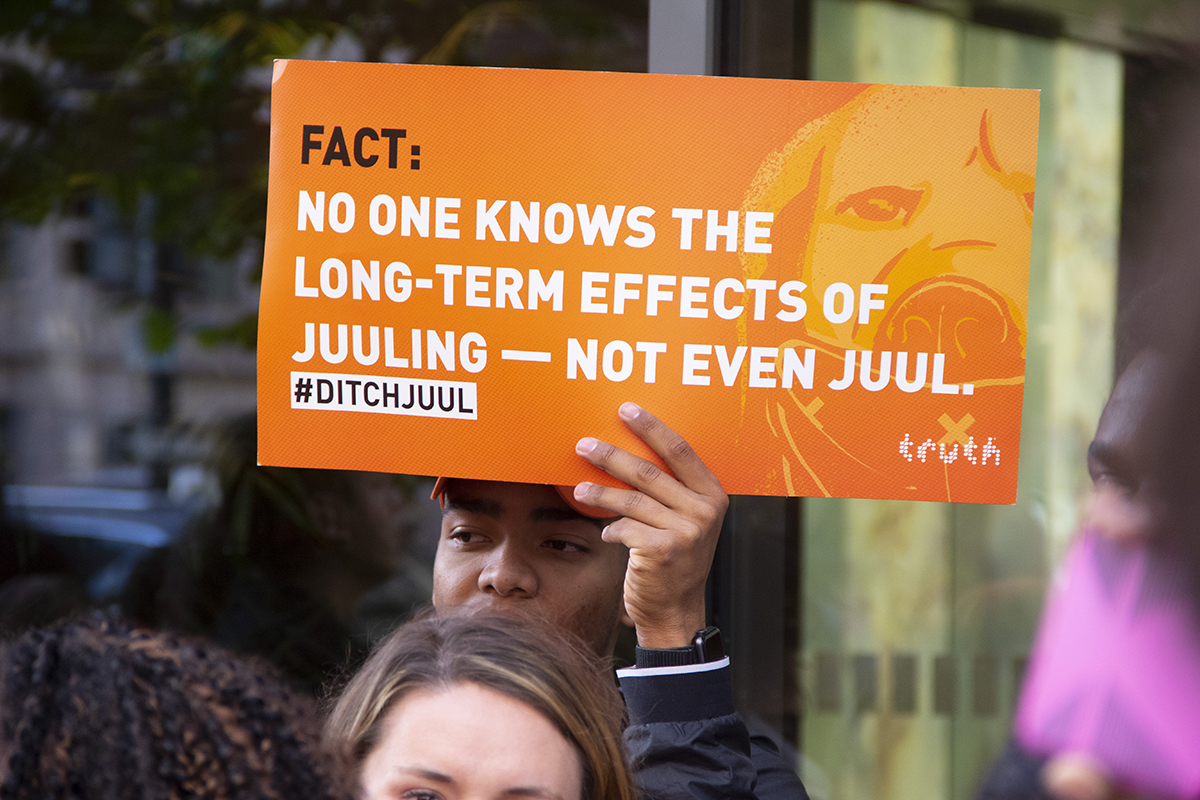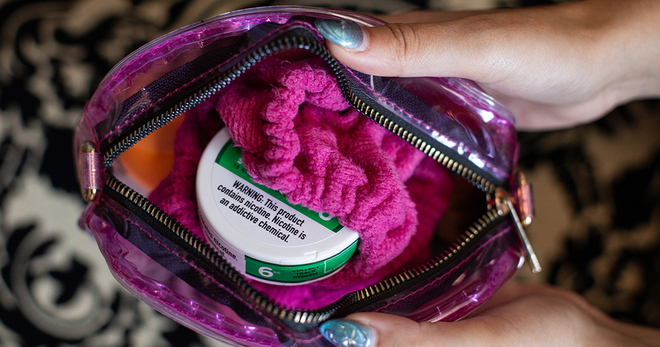What are the long-term effects of vaping?
Here’s the truth: we don’t know much about the health effects of e-cigarettes like JUUL, meaning the millions of young people who vape are essentially human test subjects.

E-cigarettes on the market today are sold in a relatively unregulated environment and have not undergone a Food and Drug Administration review of their public health impact. In 2017, the agency decided to allow the products to stay on the market while delaying their review — a decision a federal judge recently ruled illegal.
In the meantime, vaping surged among young people — many of whom never smoked cigarettes — growing 78% among high schoolers and 48% among middle schoolers in just one year, from 2017 to 2018, reaching epidemic proportions. JUUL, which accounts for three-quarters of the U.S. e-cigarette market, is driving the epidemic and has some of the highest nicotine content available among e-cigarettes.
Despite the high stakes, so much remains unknown about e-cigarettes and their health effects. Here is what we do know.
Almost all e-cigarettes contain nicotine, which can harm brain development
What are the long-term effects of juuling
High-nicotine e-cigarettes — like JUUL and the many similar products and copycats — could worsen the effects of nicotine exposure, which can harm brain development, alter nerve cell functioning, increase the risk of young people smoking cigarettes and change brain chemistry in ways that make adolescent brains more susceptible to other addictive drugs.
The average nicotine concentration in e-cigarettes sold in U.S. retailers more than doubled from 2013 to 2018, according to a study by Truth Initiative® and the Centers for Disease Control and Prevention.
Chemicals and toxins in e-cigarettes could cause long-term harm
Is vaping or juuling harmful
At least 60 chemical compounds have been found in e-liquids, and more are present in the aerosol produced by e-cigarettes. Researchers have identified several substances which are either harmful or potentially harmful to e-cigarette users, including delivery solvents and propylene glycol, which can cause upper respiratory infections.
E-cigarette flavors — even those approved for ingestion — have not been studied for toxicity if inhaled over long periods of time. Many e-cigarette flavorings contain chemicals that are known to be respiratory irritants, and research has found that some flavors are potentially more toxic than others. In fact, according to a recent Yale and Duke University study, the chemicals found in certain JUUL e-liquids produce potentially harmful acetals that may cause irritation and inflammation when heated and inhaled.
The FDA is investigating links between vaping and seizures
Can vaping or juuling cause seizures
The FDA launched an investigation into dozens of reported cases of seizures following e-cigarette use in April 2019. By August, the number of reported cases grew to 127.
Acting FDA Commissioner Ned Sharpless said in a statement that the agency does not yet “have enough information to determine if e-cigarettes are causing these reported incidents,” but asked people to continue to submit reports.
According to the statement, “detailed information about these incidents are vital to help inform our analysis and may help us identify common risk factors and determine whether any specific e-cigarette product attributes, such as nicotine content or formulation, may be more likely to contribute to seizures.”
Truth Initiative, through its highly effective truth® youth smoking prevention campaign, is directly confronting the role JUUL and other e-cigarette manufacturers have played in fueling the youth vaping epidemic through a new campaign launching during the 2019 MTV Video Music Awards on Aug. 26. The campaign, titled “Tested on Humans,” highlights how little is known about the long-term effects of e-cigarettes which are still unregulated, putting an entire generation at risk for nicotine addiction and allowing them to be treated like human guinea pigs.
More in emerging tobacco products
Want support quitting? Join EX Program
By clicking JOIN, you agree to the Terms, Text Message Terms and Privacy Policy.
Msg&Data rates may apply; msgs are automated.


